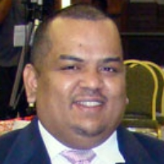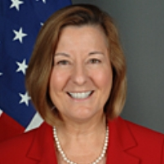Marshall Islands
 Paul, Charles Rudolph
Paul, Charles Rudolph
The Marshall Islands , a chain of 24 atolls and coral islands in the South Pacific containing only 66 square miles of land, sent a new ambassador to the United States who was educated in the U.S. and has worked at the embassy since 2007. On September 9, 2011, Charles Rudolph Paul presented his credentials to President Barack Obama as the Marshall Islands’ third, and youngest serving Ambassador to the United States. The U.S. used two atolls in the Marshalls, Bikini and Enewetak, for nuclear bomb testing in the 1950s and 1960s. Many Marshallese now live in Hawaii and Arkansas.
- Table of Contents
- News
- Overview
- Basic Information
- History
- Newspapers
- History of U.S. Relations with Marshall Islands
- Current U.S. Relations with Marshall Islands
- Where Does the Money Flow
- Controversies
- Human Rights
- Debate
- Past Ambassadors
- Ambassador to the U.S.
- Embassy Web Site in the U.S.
- Comments
- Leave a comment
U.S. Ambassador to Marshall Islands

Martha L. Campbell was sworn in as the US Ambassador to the Republic of Marshall Islands on August 21, 2009. After the US signed the Compact of Free Association, Martha Campbell actually opened the first diplomatic post in Majuro in the Marshall Islands in 1987.
 Paul, Charles Rudolph
Paul, Charles Rudolph
The Marshall Islands , a chain of 24 atolls and coral islands in the South Pacific containing only 66 square miles of land, sent a new ambassador to the United States who was educated in the U.S. and has worked at the embassy since 2007. On September 9, 2011, Charles Rudolph Paul presented his credentials to President Barack Obama as the Marshall Islands’ third, and youngest serving Ambassador to the United States. The U.S. used two atolls in the Marshalls, Bikini and Enewetak, for nuclear bomb testing in the 1950s and 1960s. Many Marshallese now live in Hawaii and Arkansas.
Comments
U.S. Ambassador to Marshall Islands

Martha L. Campbell was sworn in as the US Ambassador to the Republic of Marshall Islands on August 21, 2009. After the US signed the Compact of Free Association, Martha Campbell actually opened the first diplomatic post in Majuro in the Marshall Islands in 1987.







Comments